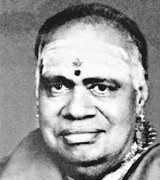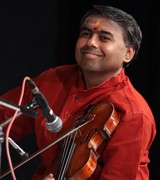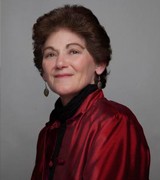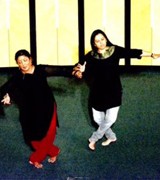COVER STORY
A CENTENARY TRIBUTE - SATHUR A.G. SUBRAMANIAM (1916-1977)
S. JANAKI

Sathur A.G. Subramaniam was a well respected musician and teacher of his time. He was a musician’s musician. He was born in 1916 at Angarai in Tiruchirapalli, to Thailammal and Ganesa Sastrigal. In his early teens he moved to Sathur where his initial music training began. He then came under the tutelage of T. Sabesa Iyer, Tanjavur Ponniah Pillai and Tiger Varadachariar at the Annamalai University, where he obtained the Sangeeta Bhooshanam degree in 1936. S.V. Parthasarathy, T.S. Krishnaswamy, T.K. Rangachari, Mayavaram Rajam and K.S. Narayanaswamy were his collegemates. He gave his first public concert at the Tyagaraja Aradhana in Tiruvaiyaru in 1938, and from then on there was no looking back.
He was a traditionalist to the core. This was reflected in his dignified demeanour—white half-sleeve shirt and veshti, bordered angavastram, sacred ash with a kumkum dot on his wide forehead, and hair tied back in a tuft. He was conservative by nature and diligently performed his daily rituals. He believed in upholding traditional values in life and music and stood firm by the pathantara taught to him by his gurus.
SPECIAL FEATURE
R.K. SHRIRAMKUMAR - OUR OWN RKS (part 2)
GOWRI RAMNARAYAN

Violinist R.K. Venkatarama Sastry was a venerable presence in M.S. Subbulakshmi’s house in the years he accompanied her on the violin. Always meticulously dressed in panchakacham, bordered angavastram, and the kind of nondescript shirt that conservative men wore in that age, he had his forehead generously streaked with sacred ash and a kumkum dot. His small spare tuft was the only thing that sometimes dared to be unruly. Everything else about him spoke of simplicity, relentless discipline and control. He could daunt you with his silence. When he played the violin you knew he belonged to an immaculate tradition. Not for him adventures and risks. He kept it straight and pure. MS had tremendous respect for his austerity and dignified bearing.
When R.K. Shriramkumar entered the MS circuit he was really a stripling. He had his grandfather’s simplicity and suddha pathantara. He was (and remains) scrupulously orthodox without making a song and dance about it. He performed his pooja and ritual with complete conviction, wore his vibhooti with utter faith, and had the same adoring veneration for Tyagaraja and other great uttama vaggeyakaras. In the years to come he would develop a taste for the best in sangeeta and sahitya, and disdain what he called “alka” (tinsel) sangeetam. I watched his benchmark rising higher and higher—for himself, as well as his choices in music.
INTERVIEW
A THOUSAND SPLENDID SUNS - An opera with Hindustani music
Sheila Silver in conversation with Manohar Parnerkar

Sheila Silver (b. 1946) is a well-known American composer of Western art music. A rare blend of academic excellence and superlative creative ability, Sheila has been one of the classical music world’s important and vital voices in America for over three decades now. With a B.A. degree from the University of California at Berkeley which she topped off with a Ph. D in composition from Brandeis University (Mass), Sheila has been a Professor in Music at both the State University of New York at Stony Brook and the College of William and Mary (VA). She has won several honours and awards in her long and illustrative career.
Sheila has composed music in a wide range of media from large orchestral to solo instrumental works, and from opera to feature film scores. Described by the music critic of the Chicago Tribune as a composer “who speaks a musical language of her own, one rich in sonority, lyrical intensity and poetic feeling”, the New York-based composer has had her works commissioned and performed by numerous well-known orchestras, chamber ensembles and soloists.
INTERVIEW
Dance conversations
Priya Srinivasan in conversation with V. Ramnarayan

Ramya Harishankar, a disciple of S.K. Rajarathnam and Kalanidhi Narayanan, has been running the Arpana Dance Company, Irvine, California, for over three decades. Also well versed in singing padams and javalis, Ramya has trained many Bharatanatyam dancers in the U.S.A. She and Priya Srinivasan form an interesting guru-sishya pair who work together in revisiting the traditional Bharatanatyam repertoire as well as creating experimental platforms of expression, often feminist and iconoclastic. The duo seem to have radical views on the Indian classical arts, dance in particular, views that can be read elsewhere in this issue, views that we may agree or disagree with, but cannot easily ignore. Priya, the author of Sweating Saris, Indian Dance as Transnational Labor, and collaborator with Ramya, among other things in performing this prose text on stage, spoke to Sruti during Dance Conversations 2016 as well as through email.
Excerpts:
Who have been your gurus and mentors? What has been Chandrabhanu’s influence on your career?
My first dance teacher was S. Rajalakshmi in Kolkata for three years. After my family migrated to Melbourne my guru was Dr. Chandrabhanu and he has been a major force in my life. He ignited my passion for the arts which then became a way of life for me.


